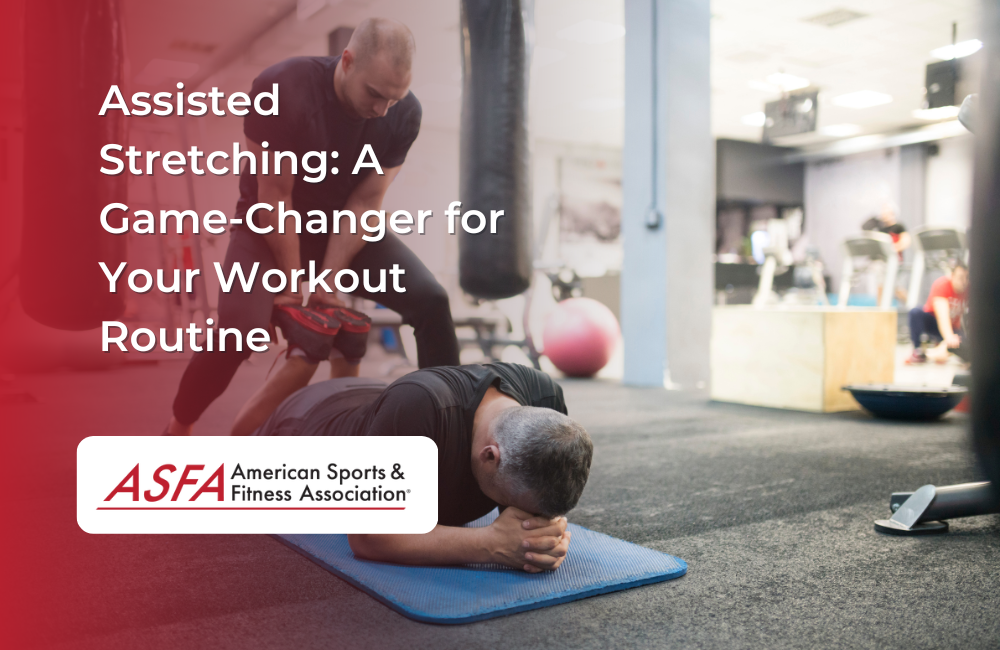Working out is a great way to stay fit, but it's important to give your body time to recover after you've pushed yourself. Stretching is a good way of ensuring that you don't get injured and keep your muscles loose so they can heal properly. When I was younger, I used to just stretch by myself and then jump right back into my workout routine like nothing had happened. Now, however, when I'm done with my workouts, I spend at least 15 minutes stretching using assisted stretching techniques.
What is assisted stretching?
Assisted stretching is a form of stretching that uses a partner to help you stretch. You can use a strap or towel, as well as your own body weight, to assist in the process. This type of exercise is especially popular after workouts because it helps increase flexibility and relaxes the muscles after intense physical activity.
Even though assisted stretching isn't exactly new, it's gained popularity in recent years thanks to its benefits for both athletes and non-athletes alike--and because it's so easy! You can do this at home or at the gym with just about any piece of equipment around: just grab an elastic band (like those used for yoga), tie one end around one ankle, and hold onto the other end while taking small steps forward until you feel tension on your leg; then repeat with other limbs until all four have been stretched out thoroughly!
If you're still not sold on the benefits of assisted stretching, check out these six reasons why it's a great way to get in a quick workout!
How to do assisted stretching
Assisted stretching is a form of yoga that uses the help of a partner to stretch muscles. While it may sound like something only practiced by experienced yogis, assisted stretching can benefit everyone. You don't need any special equipment or clothing and you'll be able to do it at home or even in public places like parks if you're feeling adventurous!
The most important thing about assisted stretching is that the person doing the assisting needs to know what they're doing--if not, injuries can occur very easily. That's why we've put together this guide: so that anyone who wants to try out this practice can do so safely and effectively!
There are three main types of assisted stretches: passive, active/passive, and active/active (where both partners actively participate). For each type of stretch below, we've included instructions on how long each hold should last as well as how many repetitions should be done before moving on to another exercise (you should always use caution when performing any physical activity).
Passive-assisted stretches are great for beginners. They don't require much technical skill and you can do them without any equipment at all! All you need is a partner who knows how to do the stretch correctly and then follow along with them. In this case, the person being stretched should be lying down on the ground or sitting on an elevated surface like a chair or bench.
Why you should try it
Stretching is a crucial part of any workout routine. It can help you reach your fitness goals and reduce the risk of injury. But it's often easier said than done, especially if you're stretching on your own. A yoga strap can be a game-changer when it comes to improving flexibility and range of motion, as well as reducing stress after a workout.
This article will explain why assisted stretching is so beneficial, how it works, how much time should be dedicated to this practice during each workout session, and how much time should be dedicated before/after workouts for maximum benefit!
The benefits of assisted stretching
- Reduces risk of injury.
- Improves flexibility.
- Increases range of motion.
- Improves performance, especially in sports that require a lot of lateral movement (e.g., tennis).
- Increases muscle strength and endurance by helping you work through a full range of motion with less effort than normal stretching would require, which allows you to train harder without risking injury or exhaustion from overexertion. This can also help reduce post-workout soreness because you're not pushing yourself too hard or straining muscles unnecessarily during your workouts.
Assisted stretching is also known as "pre-habilitation", which means it increases the likelihood that you'll avoid injuries before they happen; research suggests this may be due to increased mobility around joints--and thus decreased risk for sprains and tears--as well as improved flexibility throughout your body.
Try adding these stretches to your workout routine. You'll be glad you did.
Stretching is a great way to improve your flexibility and prevent injury, but it's not always easy to know how much or how often to stretch.
To help you get started, we've compiled some basic guidelines for stretching before and after workouts.
Stretching should be gentle, not painful. If you feel any pain while stretching, stop immediately--you're probably doing something wrong! Stretches should never cause cramps or discomfort in any part of your body; if they do, try switching up the position or technique until they feel better on both sides of the muscle group being stretched (if applicable).
Conclusion
Assisted stretches are a great way to get the most out of your workout. They're easy to do, they don't require any special equipment or space, and they can be done anywhere. If you're looking for new ways to improve your flexibility or recover from injury, consider adding these stretches into your routine!





